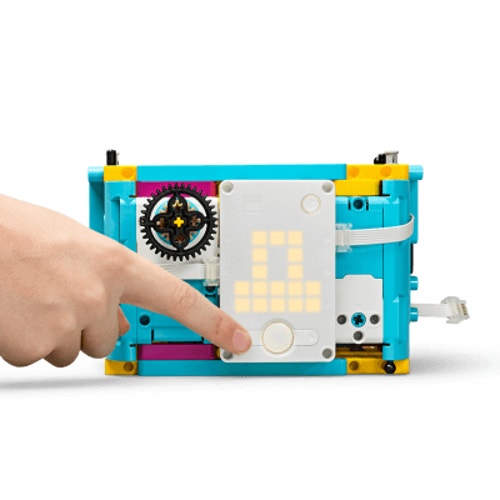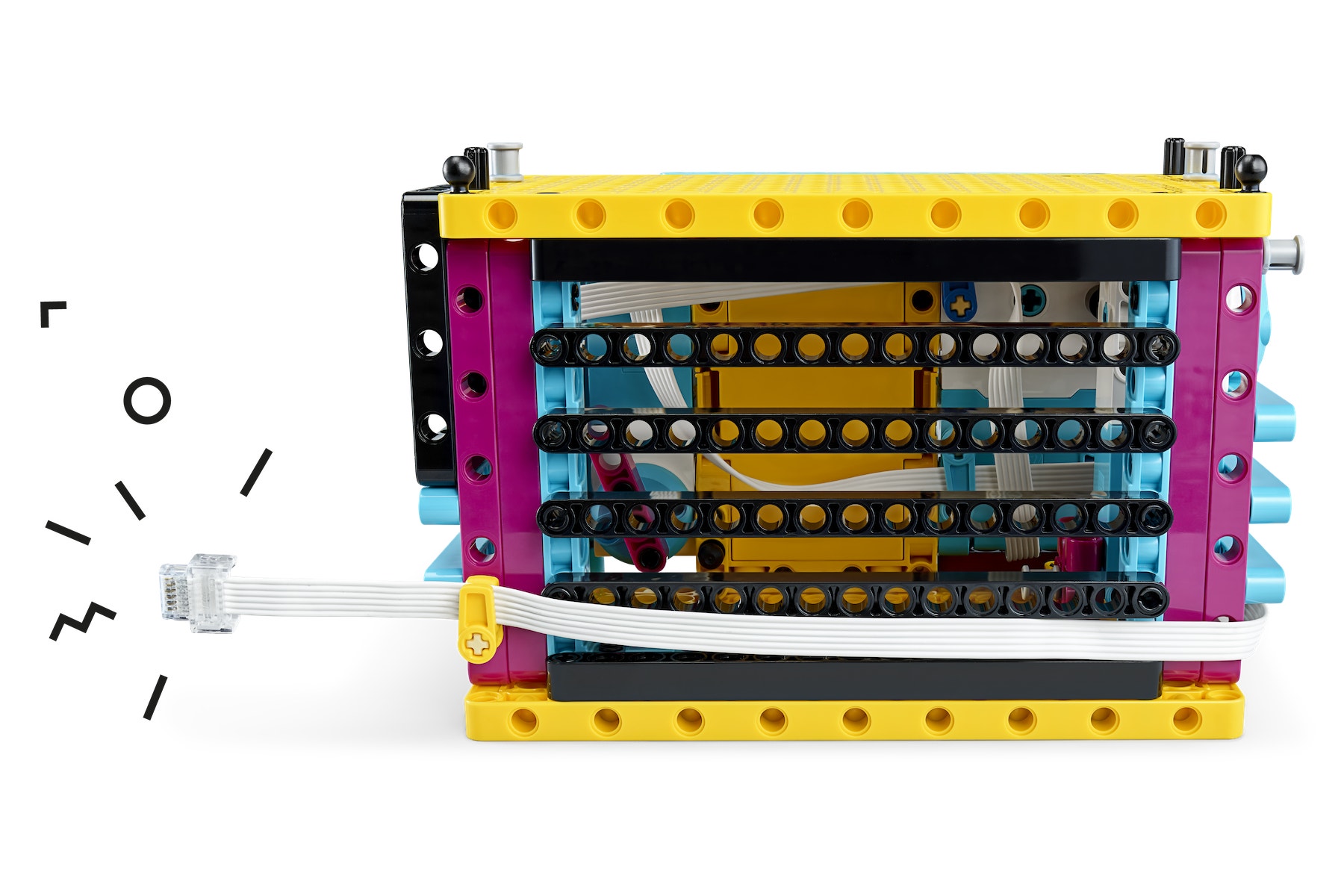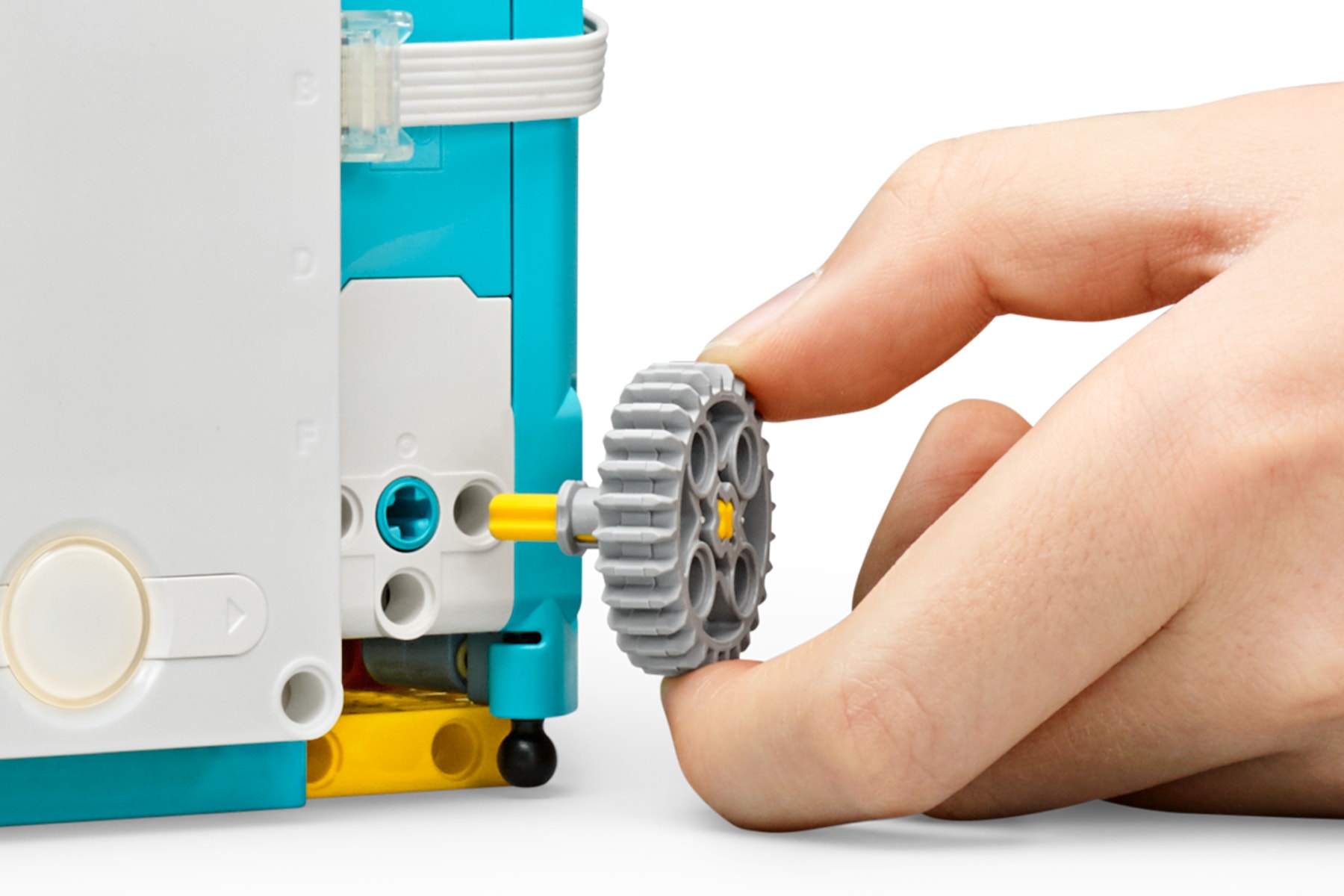Keep It Safe
Use conditions to lock or unlock the door of a safe-deposit box.

Lesson plan
1. Prepare
- Read through the student material in the LEGO® Education SPIKE™ App.
2. Engage (5 Min.)
- Use the ideas in the Ignite a Discussion section below to engage your students in a discussion related to this lesson.
- Use the video to explain the lesson.
3. Explore (20 Min.)
- Have your students work in pairs to build the build the safe-deposit box.
- Ask them to play the program to see how the lock works.
4. Explain (5 Min,)
- Facilitate a discussion about how adding conditions can make the safe-deposit box even more secure.
5. Elaborate (15 Min.)
- Ask your students to make their safe-deposit boxes even more secure by adding more conditions to their programs.
- Don't forget to leave some time for cleanup.
6. Evaluate
- Give feedback on each student's performance.
- You can use the assessment rubrics provided to simplify the process.
Ignite a Discussion
Start a discussion about iteration or fixing things by asking relevant questions, like:
- Can anyone give an example of a safety device?
- What makes a password strong or weak?
- What's a condition?
Have your students watch this video to see what they're about to do.

Building Tips
Tandem Build
Split each team's building tasks to ensure that everybody is actively involved:
- Student A: Safe-Deposit Box Door
- Student B: Safe-Deposit Box Box

Ready to go for the next lesson!
This model is also used as the base model for the next lesson, Keep It Really Safe. That's why there's a motor that isn't being used in this model. The motor's wire is clipped to the back of this version of the model.

Manual Unlock
This model has a manual key to unlock the door if needed.

Coding Tips
Main Program

Possible Solution

Other Programs

Differentiation
Simplify this lesson by:
- Using the Dashboard to explain to your students how many degrees the motor has been turned (Find more information about the Dashboard in the Help Section of the SPIKE App)
Take this lesson to the next level by:
- Having your students modify the Light Matrix and Sound file to customize their safe-deposit box
- Asking each team to modify their program and challenge another team to unlock their safe-deposit box

Assessment Opportunities
Teacher Observation Checklist
Create a scale that matches your needs, for example:
- Partially accomplished
- Fully accomplished
- Overachieved
Use the following success criteria to evaluate your students' progress:
- Students understand what a condition is.
- Students are able to use conditions in their program.
- Students can discuss digital security in detail and with precision.
Self-Assessment
Have each student choose the brick that they feel best represents their performance.
- Blue: I've used one condition in my program.
- Yellow: I've used two conditions in my program.
- Violet: I've used more than two conditions to create a super cool and safe program!
Peer-Assessment
Encourage your pupils to provide feedback to one another by:
- Having one pupil use the coloured brick scale above to score another pupil’s performance
- Asking them to present constructive feedback to one another so that they can improve their group’s performance during the next lesson

Language Arts Extension
To incorporate language arts skills development:
- Have your students explore the meaning of digital security terminology, like:
▷ Boolean
▷ Conditions
▷ Encryption
▷ Case-sensitive
Note: This will make for a longer lesson.
Career Links
Students who enjoyed this lesson might be interested in exploring these careers pathways:
- Information Technology (Computer Programming)
- Information Technology (IT Applications)
- Information Technology (Oracle / Database Programming)
- Information Technology (Web Design)
Teacher Support
Students will:
- Explore conditional programming
- Be able to explain the principles of digital security
Australian Curriculum: Technologies
ACTDIP029
Design algorithms represented diagrammatically and in English, and trace algorithms to predict output for a given input and to identify errors
ACTDIP030
Implement and modify programs with user interfaces involving branching, iteration and functions in a general-purpose programming language
ACTDIP031
Evaluate how student solutions and existing information systems meet needs, are innovative, and take account of future risks and sustainability




